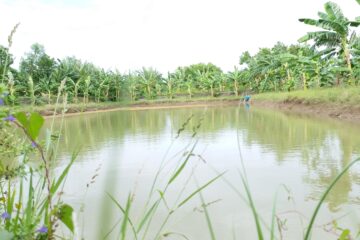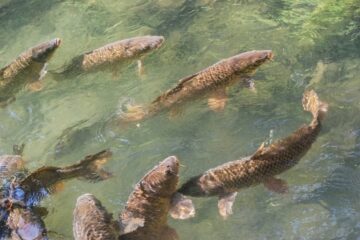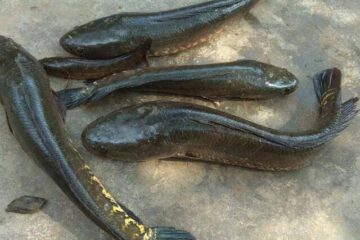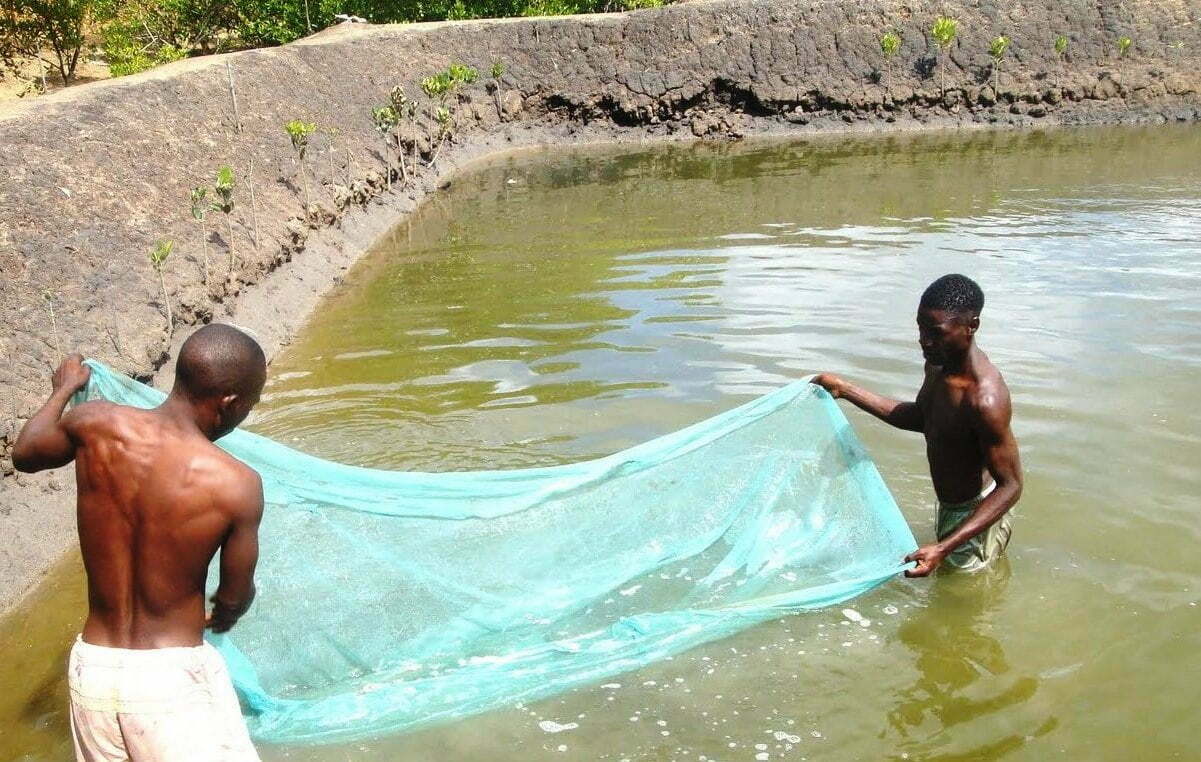Publication Date: September 2018
Water and soil play a crucial role in fish farming. Physical and chemical changes in both can significantly impact fish growth. Maintaining the quality of water and soil in fish ponds is essential for optimal fish growth and survival.
Quality of Pond Water
Temperature: Freshwater fish are cold-blooded and adjust their body temperature to their surroundings. An ideal water temperature for fish is between 28-30°C. Managing temperature fluctuations involves maintaining water clarity and depth and using aerators.
pH Levels: The pH level measures the hydrogen ion concentration, indicating whether the water is acidic or alkaline. A pH range of 6 to 8.5 is suitable for fish growth and production. Abrupt changes in pH can stress fish, so it should only vary by 0.4 units per day.
Dissolved Oxygen: Oxygen is vital for fish growth. The dissolved oxygen level should always be above 3.5 ppm. Factors like photosynthesis, organic matter, and the presence of weeds affect oxygen levels. Dead algae and organic matter should be removed to maintain oxygen levels.
Turbidity: Turbidity is caused by suspended particles that block light penetration, affecting photosynthesis. Excessive clay particles can clog fish gills. Gypsum or alum can clear turbidity but should be used with lime to neutralize the pH.
Water Color: Water color indicates the presence of microorganisms, minerals, and organic matter. Light brown, yellowish-brown, and light green waters are ideal for fish growth. Dark brown, bright green, and other colors may indicate poor conditions.
Quality of Pond Soil
pH Levels: Soil pH should be between 6 and 8.5. If it is below this range, lime should be applied. For soil pH between 6 and 7, 0.3 to 0.5 tons of lime per hectare is recommended.
Bottom Soil: The pond bottom accumulates unused feed and waste. Rich soil helps release nutrients with the aid of dissolved oxygen. Poor soil quality can lead to the production of harmful gases like hydrogen sulfide, ammonia, and methane.
Soil Composition: Sandy loam soil at the bottom supports healthy fish growth. The soil should continuously produce nutrients and sustain the food chain for fish.
Maintenance Practices
To enhance fish production, water and soil management practices such as fertilization, artificial feeding, and regular water changes are crucial.
Dr. M. Alagappan and Dr. S. Senthur Kumaran, Agricultural Science Center, Kundrakudi, Sivagangai – 630 206








